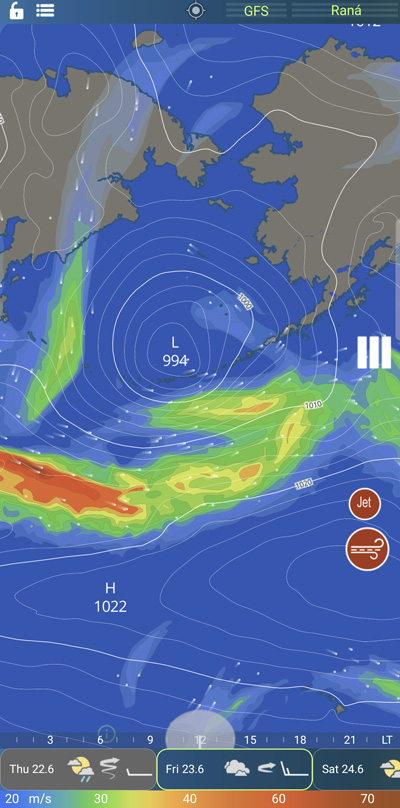Now also free widgets
How to do it
Select the main map icon for "wind" and on the right side, you can choose a icon "jet".
A color map is displayed in the range 60 m/s + (Units can be set in "settings".)
Arrows, flags or particles can also be set in "settings".

Explanation of the origin and characteristics of the jet stream, a type of wind
Origin: Most jet streams are formed due to temperature and pressure differences between warm and cold air masses in the upper atmosphere. One of the well-known examples is the polar jet stream, which forms at the boundary between warm tropical air and cold polar air.
Characteristics:
High velocity: Jet streams typically have high velocities, often exceeding 100 km/h (60 mph) and reaching several hundred km/h (mph). This is caused by large horizontal temperature gradients, resulting in strong pressure gradients.
Narrow band: Jet streams are concentrated in relatively narrow bands or belts that extend horizontally across the atmosphere.
Altitude: Jet streams occur at altitudes between 9 and 16 kilometers (5 to 10 miles) in the troposphere, the lowest layer of the atmosphere.
Weather influence: Jet streams play a significant role in shaping weather patterns. They affect the direction and speed of large-scale air movements and influence the movement of atmospheric systems. For example, the jet stream can influence the path of cyclones and anticyclones and contribute to the formation of storms.
Jet streams are important phenomena in meteorology and have implications for aviation and global climate systems. Their occurrence, intensity, and position can vary depending on the season, geographical location, and current atmospheric conditions.
